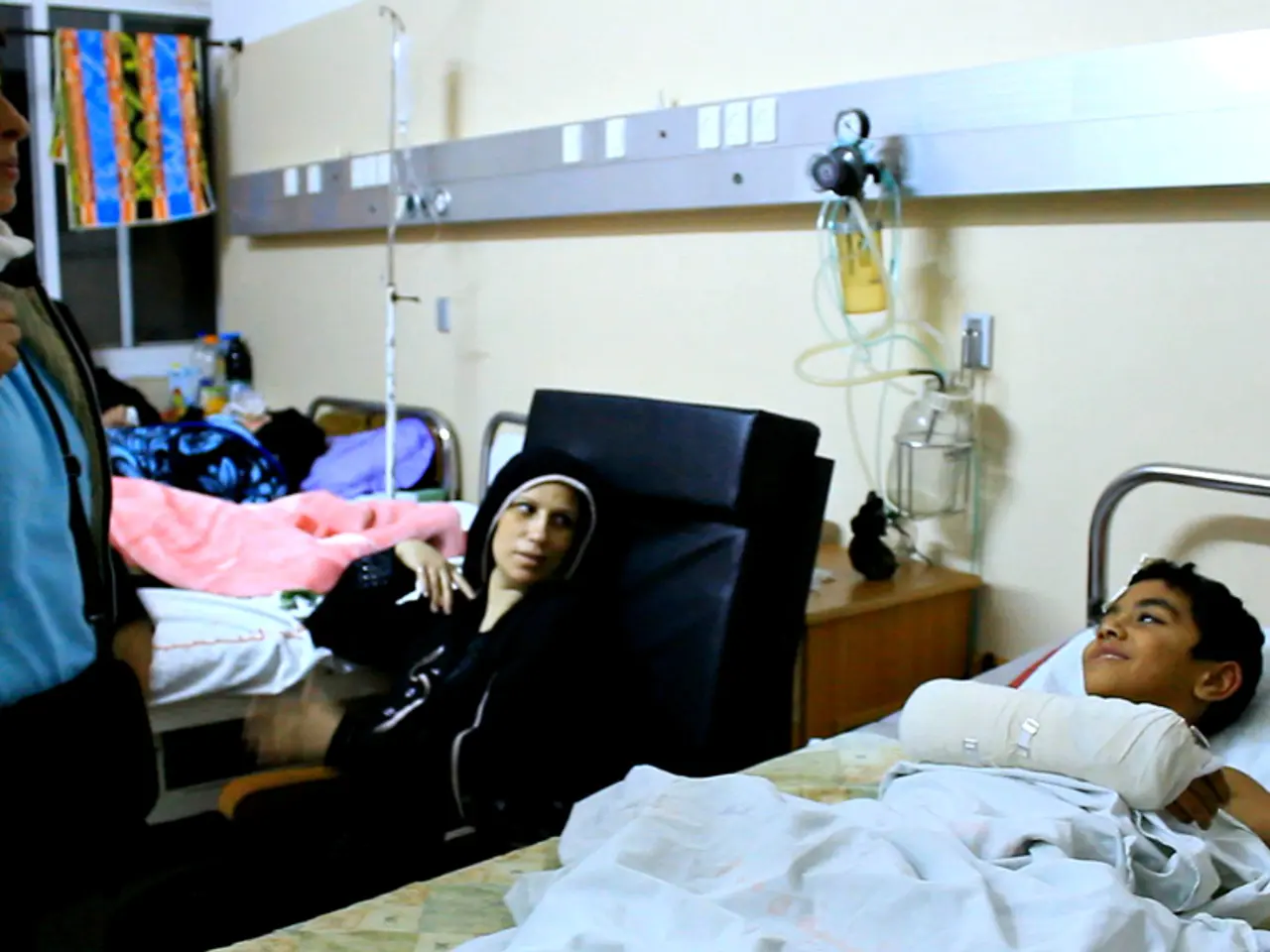Frequently Encountered Forms of Medical Negligence in McAllen's Hospitals
In McAllen, hospitals are grappling with a significant issue: medical malpractice. This problem, encompassing various forms such as misdiagnosis, prescription errors, surgical mistakes, anesthesia-related complications, and negligence in prenatal care, poses considerable health risks for patients.
Postpartum care errors are particularly common, leading to misdiagnosis or lack of diagnosis of postpartum depression, physical complications like infections, hemorrhage, or hypertensive disorders, and delayed or incorrect treatment. These oversights can have severe health consequences for mothers.
Anesthesia-related complications also pose a pressing concern, ranging from mild nausea and dizziness to life-threatening issues such as allergic reactions or lung infections. Prescription and medication errors are another critical aspect of medical malpractice, leading to severe health consequences.
Obstetric negligence, a broader scope of issues, includes failure to accurately interpret or respond to fetal distress signals, inadequate monitoring of the mother and baby, improper use of birth-assisting tools, and failure to perform a necessary cesarean section or doing so negligently.
To effectively reduce the incidence of medical malpractice in McAllen hospitals, a multifaceted approach focusing on risk management, communication, education, and technology is essential.
Firstly, hospitals must strengthen risk management and quality improvement protocols. This includes implementing structured risk management plans that identify potential risks proactively and develop response protocols tailored to common issues like misdiagnosis and prescription errors. Data analysis and continuous feedback from staff and patients can help pinpoint areas needing improvement. Clear policies and procedures ensure every staff member understands their role in risk prevention and adheres to standardized care guidelines.
Secondly, enhancing communication and documentation among healthcare providers is crucial. Effective communication helps reduce misunderstandings that may cause diagnostic or medication errors, while thorough and accurate documentation provides clear information for ongoing treatment and legal protection.
Thirdly, ongoing education and training are vital to keep staff updated on the latest evidence-based practices. Training in recognizing early signs of patient deterioration can improve supervision and timely interventions.
Fourthly, leveraging technology and innovative solutions can help address systemic issues contributing to malpractice. This includes utilising risk management information systems that provide real-time monitoring of potential errors and automate reporting to facilitate quick response. Clinical decision support tools can assist clinicians in accurate diagnoses and appropriate prescribing. Partnerships with healthcare startups offering data-driven platforms and patient safety innovations can also be explored.
Lastly, cultivating a culture of safety and accountability is crucial. Staff should be encouraged to engage in identifying risks and participate actively in quality improvement initiatives. A non-punitive environment where staff can report errors or near-misses without fear enables learning and system improvements. Regular reviews of malpractice incidents can help learn lessons and update protocols accordingly.
By combining these strategies, McAllen hospitals can significantly lower the likelihood of malpractice related to misdiagnosis, prescription errors, and inadequate patient supervision, ultimately improving patient safety and care quality.
Patient rights are essential in understanding medical malpractice. Victims of medical malpractice can pursue negligence claims for compensation, but the amount may be subject to compensation limits based on various factors, including the severity of the injury and associated losses. It's essential for victims to understand their rights and pursue legal remedies if necessary.
The process of reporting medical malpractice involves documenting the case, contacting a malpractice attorney, and reporting the incident to state medical review boards for investigation and action. Understanding the prevalence and causes of medical malpractice in McAllen is the first step towards improving patient safety and care quality in the city's healthcare facilities.
- In addition to addressing postpartum care errors and obstetric negligence, hospitals must focus on chronic diseases like cancer, respiratory conditions, and digestive health, as well as eye health, hearing, cardiovascular health, and skin conditions, to provide comprehensive health and wellness services.
- Therapies and treatments for chronic diseases and other medical-conditions should be administered with caution to avoid potential complications, especially in light of the high incidence of medical malpractice in McAllen.
- Risk management strategies should extend to include early detection and management of chronic diseases, ensuring timely diagnoses and appropriate treatments to minimize health risks.
- Effective patient education is crucial in managing chronic diseases, equipping patients with the knowledge necessary to recognize symptoms, understand their treatment options, and adhere to prescribed therapies and treatments.
- Collaborative efforts between hospitals, healthcare providers, and the community can help raise awareness about the importance of patient safety and reduce the occurrence of medical malpractice.
- By implementing robust risk management strategies, enhancing communication, investing in ongoing education, leveraging technology, and fostering a culture of safety, McAllen hospitals can strive to deliver quality care and improve patient outcomes for a wide range of medical-conditions, not just those related to postpartum care and obstetric negligence.




